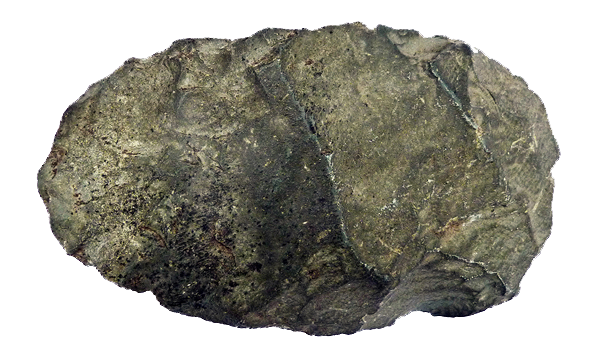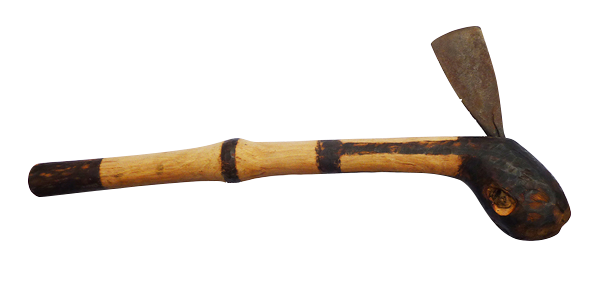“Knicks and dull edges are abominations, so use knives and hatchets for nothing but they were made for.” - Horace Kephart.
What was the sound that heralded the arrival of mankind?
Perhaps, about two and a half million years ago, it was the sound of pebbles striking together, as one of our distant ancestors Homo habilis (skilful man) made the first stone tool – a functional blade. It could be argued that it was this act that defined our species.


Neolithic roughed out hand axe, found by the author in the Lake District, knapped from green tuff, circa approx 3,000 BC
As a mammal, we are the only apex predator without natural weapons. No horns, fangs or claws – only our intellect and our ability to shape the environment. Our species has literally carved a niche in this world using a blade - by cutting and shaping natural materials, from shelter and clothing to food and weapons. It is hard to think that the attitudes and lifestyles of today’s high-tech society are entirely based on a broken rock.
It could be argued that the Stone Age only ended in Namibia with the Bantu Migration; with the arrival of the Herero people in the 17th centuary. Nomadic pastoralists who migrated from the east African lakes and entered Namibia from the northwest, bringing with them their smelting and metalurgy technology. They started trading which brought an end of the neolithic for the San Bushmen.
The San Bushman carry two main blades, the chop-chop (axe/adze) and a knife. They occasionally carry a third blade in the form of a spear with a steal head when hunting.


The chop-chop is an ingenious tool. The blade is socketed in a dense, swirling grained root-ball head and the main stem of the tree acts as the handle. The beauty of this tool is that the head can be kocked free, so the chop-chop has four core uses; as an axe with the blade in the vertical, as an adze with the blade in the horizontal, as a pounding tool with the blade removed, and even as a smoking pipe as the socket can be loaded with tobacco and smoked through a small hole that is drilled through from the back of the head. It is like the original multi tool!


The knife needs very little by way of introduction, as it is undoubtedly the most frequently used tool of the wilderness traveller, for a myriad of daily tasks. The English word blade originates from the Anglo Saxon word blæd, which means a leaf.
The Bushman blade is a perfect example of a long leaf shape, they are usually made from the leaf springs of old 4x4’s that have been abandoned, heating the high carbon steel in a hot fire and pounding it to shape. Once the blade had been shaped it is then handled and sheathed. The tang (the bit that goes in the handle) of the blade is repeatedly heated until it is red hot and used to burn a socket into the handle, which is finally fixed in place by cutting up small peices of discarded plastic and pushinging them into the socket to act as a glue.


With an axe and a knife the San Bushmen can make everything they need to sustain life in the desert.


Notice the perfect deep squat and use of toes as a grip when carving
Here are a few golden rules of knife use –
-
Always keep your knife sharp, as the sharper the knife, the safer it is. Remember – you are only as sharp as your knife!
-
Never point a knife at someone, even in jest, as it is legally construed as an offensive act.
-
When travelling, be sensible and know the legal remits of carrying a knife in your destined country.
-
Always pass a knife to someone safely, with the handle presented first, the blade up with no fingers trailing over the handle, and always make eye contact with the person you are passing it to, to ensure they are concentrating!


Stay sharp!

